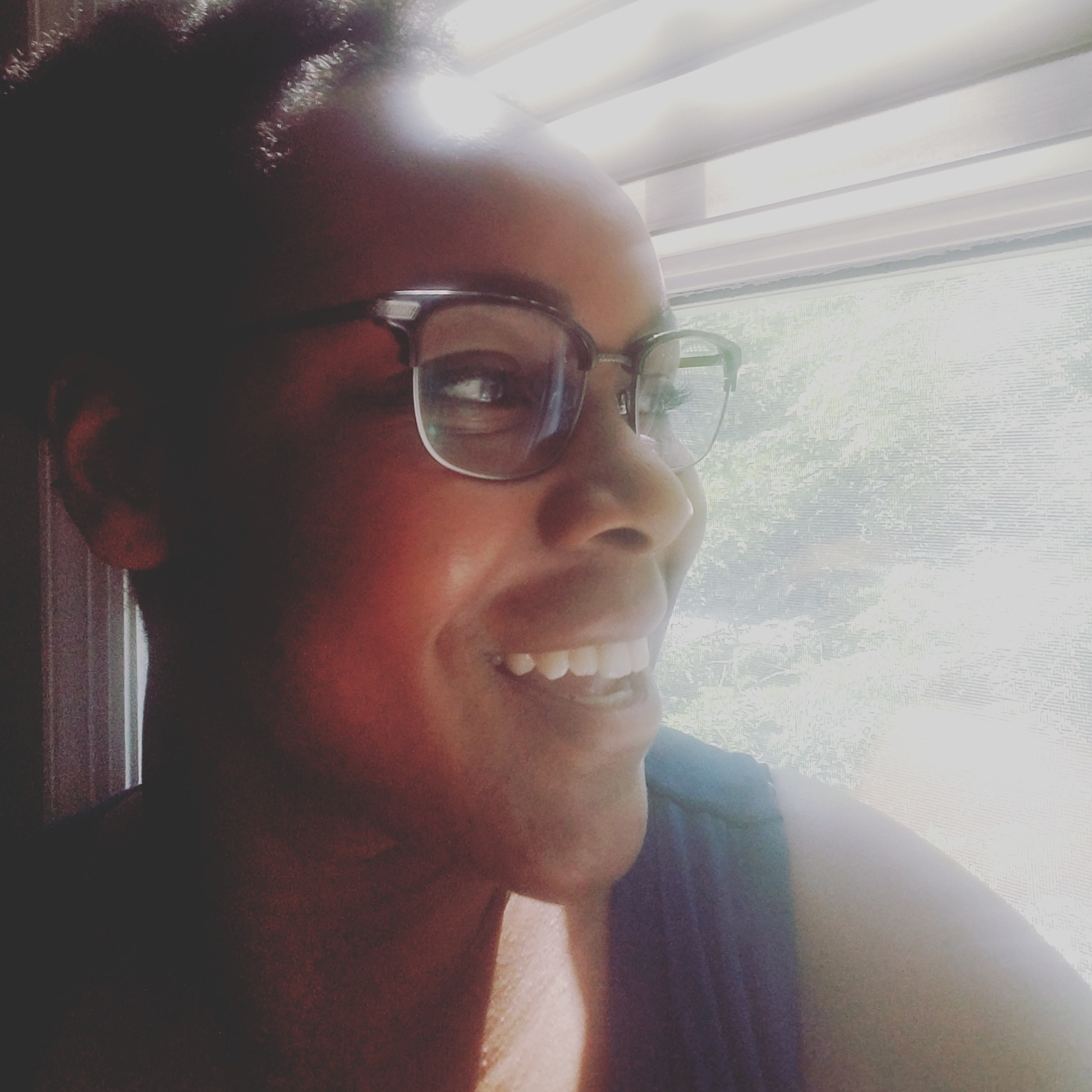Let's talk about butter. Is there anything like it? Rich, smooth, salty, or sweet, there is nothing as satisfyingly decadent. Butter sometimes gets a bad reputation, but I think that when used appropriately, butter can be the best part of a meal.
Butter is an emulsion, or a mixture of two or more liquids that don't want to be friends. In this case, we have butterfat (oil) and water. The milk solids act as a liaison (or emulsifiers), which is exactly what it sounds like. I always like to say that the butterfat and water are like grumpy kids in the backseat of the car. It doesn't matter what they want, the milk solids are the ones driving the car.
Butter is a by-product of over-mixing cream. If you've ever tried to make whipped cream and gone a bit overboard, congratulations, you've made butter! By agitating the heavy cream, you separate it into two parts: butterfat and buttermilk. (Side note: a lot of people think buttermilk is bad for them, but most of the “fat” is in the butter!) The butterfat also holds onto some milk solids and water, which is super helpful when we cook with butter.
There are many types of butter, but at your average grocery store, you will find two main kinds: unsalted and salted butter. Please, please, please stop buying salted butter! I cannot stress enough how important this is. If you are someone that likes to bake, you should never use salted butter. That's because baking is a science, and additional salt will throw off your finished product. Imagine if your recipe calls for a teaspoon of salt, but you’ve already added an unknown amount of salt via your butter. That’s going to be a very salty brownie! Unsalted butter allows you to control the salt in the final product. Salt is also used as a preservative, so unsalted butter is generally going to be a fresher product, since the grocery store can’t have it hanging around for as long.
One of my favorite things in the world is brown butter. Also known as buerre noisette (French for hazelnut butter), brown butter is made very simply by browning the milk solids in the butter. It is delicious on a multitude of dishes from pastas, fish, and vegetables to galettes, pork chops, and blondies.
How to Make Brown Butter
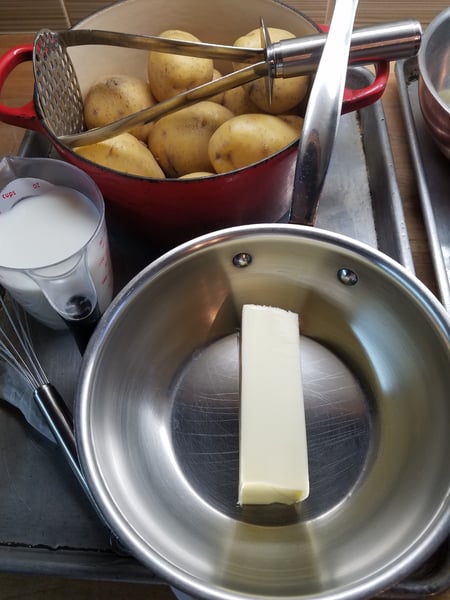 1. Place butter in a small saucepan over medium heat.
1. Place butter in a small saucepan over medium heat.
2. As the butter starts to melt, it will foam up. This is good - the water is evaporating!
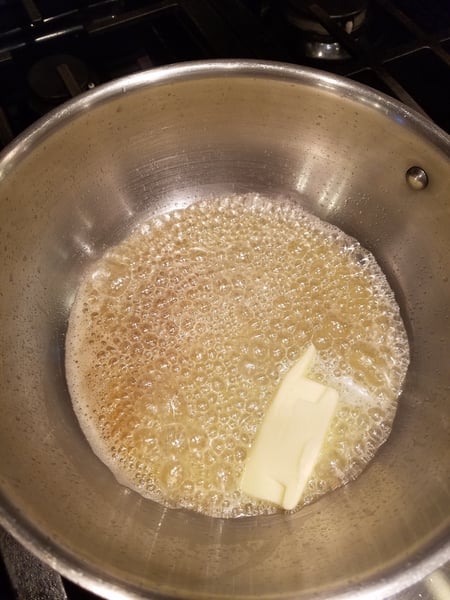
3. Whisk or swirl the butter in the pan to ensure the solids are cooking evenly.
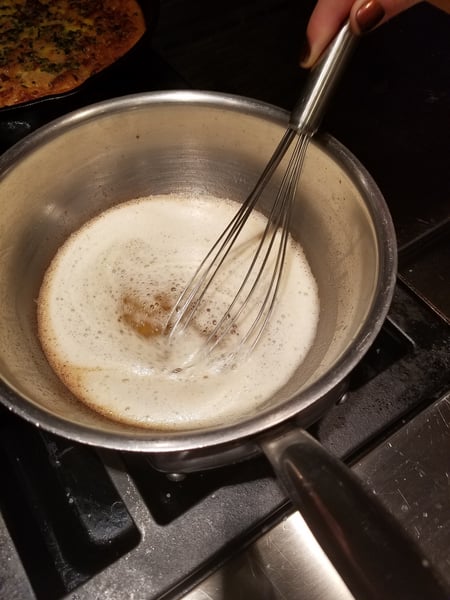
4. You will notice the bubbles will subside and the milk solids will turn from golden to deep amber. That’s it. You’ve made brown butter!
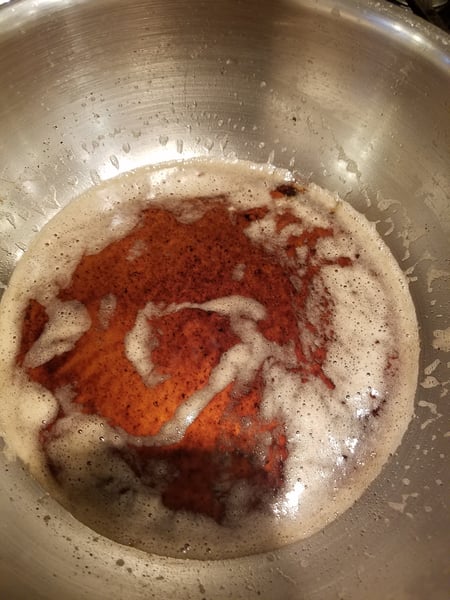
Try drizzling it over green beans (a classic), adding it to cookies and brownies (so delicious) or anything else that strikes your fancy! Learn how to make and work with brown butter in The Chopping Block's Know Your Gnocchi (Cauliflower Gnocchi with Roasted Butternut Squash and Sage Brown Butter Sauce) and Pasta Workshop (Roasted Squash and Goat Cheese-Filled Ravioli with Brown Butter Sauce and Wilted Brussels Sprouts Leaves) hands-on cooking classes.
Of course, brown butter would be a lovely addition to your mashed potatoes tomorrow for Thanksgiving. If you need help finalizing your menu, download our Thanksgiving Survival Guide. Also, don't miss our Owner/Chef Shelley Young's last minute tips live during the McDonald's Thanksgiving Parade on WGN-TV. One of her segments is all about how to make mashed potatoes!


